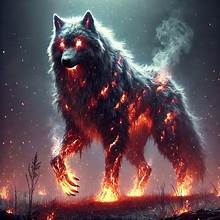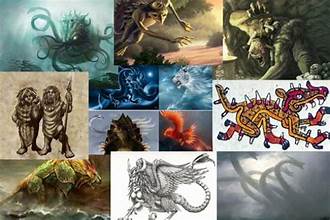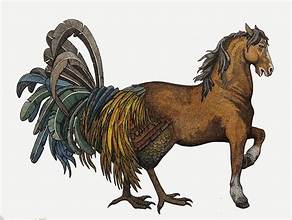Impish Creature of Folklore: The Mischief-Makers of Myth and Legend

The impish creature of folklore is one of the most enduring and beloved figures in various cultures around the world. These mischievous beings are often portrayed as small, sprightly creatures that thrive on causing trouble and creating chaos. From the classic European goblins to the trickster spirits found in African and Native American folklore, the idea of the impish creature of folklore spans many traditions and cultures, each adding its own unique spin to these troublesome figures.
This article will explore the origins, characteristics, and various representations of the impish creature of folklore in mythological traditions across the globe. We will delve into how these creatures have evolved over time, their role in different cultures, and why they remain so fascinating to modern audiences.
Table of Contents
Understanding the Impish Creature of Folklore
The concept of an impish creature of folklore can be traced back to ancient mythology, where small, mischievous entities were often used to explain everyday misfortunes, accidents, and unexplained phenomena. These creatures were seen as the personification of chaos, trickery, and unpredictability, with their actions ranging from harmless pranks to more malicious deeds.
In European folklore, for instance, imps are often depicted as tiny, mischievous beings with a penchant for causing mischief. They are said to lurk in the shadows, hiding in forests, caves, or even the homes of unsuspecting humans, waiting for the perfect moment to unleash their tricks. In many cases, these creatures were not inherently evil but were instead driven by a desire to create fun, chaos, and disruption.
Across other cultures, the impish creature of folklore might take different forms, but they share a common thread: a love for mischief and a disregard for societal norms and expectations. In some stories, imps are seen as helpers or guides, offering wisdom and advice wrapped in riddles or paradoxes. In others, they are portrayed as obstacles to be overcome or adversaries to outwit.
The Origins of the Impish Creature of Folklore

The word “imp” itself has roots in Old English, where it was used to refer to a small demon or fiend. Over time, the definition of the term broadened to include any creature, human or non-human, that engaged in mischievous or prankish behavior. The impish creature of folklore shares a similar thematic origin across various cultures, though the names and characteristics may differ.
In pre-Christian Europe, many impish creatures were believed to be spirits of nature, particularly those associated with the wild and untamed forces of the world. These entities were often linked with specific natural locations such as forests, rivers, or mountains, and they were thought to possess supernatural abilities. In medieval Christian Europe, however, imps became increasingly associated with demonic forces, often considered the minions of Satan. This shift reflected the growing influence of Christianity in Europe, where nature spirits and gods were demonized and recast as malevolent entities.
In other cultures, the impish creature of folklore did not take on a demonic role but was still viewed with suspicion. For example, in Scandinavian folklore, the impish creature of folklore might take the form of a “troll,” a creature often depicted as a trickster figure who could cause mischief or harm but was also sometimes helpful in more complicated ways. In Irish mythology, creatures like the leprechaun fit the archetype of the imp, being small, tricky, and often using their cunning to outwit humans.
Common Characteristics of Impish Creatures in Folklore
While the impish creature of folklore varies widely across cultures, certain characteristics are consistently present in these stories. Below are some of the most common traits found in these mischievous creatures:
1. Small Stature
Imps are typically depicted as being small in size, often no taller than a human child. This diminutive stature enhances their role as tricksters, allowing them to slip unnoticed through spaces and surprise unsuspecting victims. In many myths, the size of an impish creature of folklore is used to emphasize their ability to be overlooked or underestimated, only to surprise those who come into contact with them.
2. Mischief and Trickery
The central characteristic of an impish creature of folklore is its love for mischief. These creatures enjoy playing pranks, causing confusion, and disrupting the normal order of things. Whether it’s stealing food, hiding personal belongings, or leading travelers astray, imps revel in their ability to create chaos and confusion. Their pranks are often harmless in nature, but they can become dangerous if they push their mischief too far.
3. Connection to Nature
In many cultures, imps are closely tied to the natural world. They are often depicted as beings that inhabit forests, caves, or other remote places. In some cases, they are seen as the spirits of the land, guardians of specific locations, or manifestations of natural forces. This connection to nature gives imps a sense of unpredictability and wildness, further reinforcing their chaotic and mischievous nature.
4. Supernatural Abilities
Imps often possess magical or supernatural powers that aid them in their pranks and tricks. These abilities might include shape-shifting, invisibility, or the ability to control elements like fire or water. In some stories, imps use their powers to trick humans into making bad decisions or to lead them into dangerous situations. This supernatural aspect of the impish creature of folklore makes them even more formidable, as they can transcend the normal boundaries of the natural world.
5. Trickster Archetype
Many cultures have a version of the trickster figure, and the impish creature of folklore often embodies this role. Tricksters are typically characterized by their wit, cunning, and ability to outsmart others. Imps often use their intelligence and cleverness to get the better of humans, often teaching lessons or challenging the norms of society in the process.
Famous Impish Creatures of Folklore

The impish creature of folklore takes many forms, each with its own unique characteristics and role in its respective cultural tradition. Below are some of the most famous and widely recognized imp-like creatures from various folklore traditions.
The Leprechaun (Irish Folklore)
One of the most famous impish creatures of folklore is the leprechaun, a small, bearded creature known for his trickery and love of gold. According to Irish legend, leprechauns are solitary creatures who spend their time guarding pots of gold hidden at the end of rainbows. They are known to play tricks on anyone who tries to capture them, often offering a fake promise of granting wishes in exchange for their freedom. The leprechaun is the quintessential trickster figure in Irish folklore and serves as an archetype of the impish creature of folklore.
The Gremlin (Modern Folklore)
The gremlin, a mischievous creature from modern folklore, is often associated with World War II pilots who believed that small impish creatures were sabotaging their aircraft. Gremlins are typically depicted as impish creatures that cause mechanical failures or misfortune, and they became popularized in books, films, and popular culture. While they are often depicted as malicious, gremlins, like other impish creatures of folklore, can also be seen as pranksters rather than malevolent beings.
The Puck (English Folklore)
Puck, also known as Robin Goodfellow, is a famous impish creature of folklore from English mythology, particularly in Shakespeare’s play A Midsummer Night’s Dream. Puck is a mischievous fairy who enjoys playing pranks on humans, often causing confusion and chaos. He is the embodiment of the trickster archetype and represents the unpredictable and capricious nature of the natural world.
The Brownie (Scottish Folklore)
In Scottish folklore, the brownie is a small, impish creature who helps with household chores and tasks in exchange for small gifts or offerings. Brownies are known for their love of work and their tendency to help with tasks such as milking cows, baking bread, or cleaning the home. However, they can become offended if they are not properly respected or compensated, and their mischief can quickly turn into a source of trouble for the humans they help.
The Role of Impish Creatures in Folklore and Culture
The impish creature of folklore plays an important role in the traditions and cultures of many societies. These creatures often serve as symbols of unpredictability, chaos, and the subversion of order. In some cases, they are used to explain natural disasters, bad luck, or unexplained events. In other instances, they challenge societal norms and offer lessons about the consequences of greed, arrogance, or selfishness.
Imps are also often used in stories as cautionary figures. They remind people to be humble, to respect the natural world, and to be aware of their surroundings. Because these creatures are often small and underestimated, they can teach the lesson that even the seemingly insignificant can have great power when used cleverly or mischievously.
In addition to their role in mythology, the impish creature of folklore has become a prominent figure in modern popular culture. From books and movies to video games and cartoons, imps continue to captivate the imagination, whether they are portrayed as playful pranksters or as dark, malevolent forces.
Also read Foster at CryptoProNetwork: The Ultimate Guide to Growth and Success
Conclusion
The impish creature of folklore is an enduring symbol of mischief, chaos, and trickery that spans cultures and time periods. Whether they are causing harmless pranks or leading unsuspecting humans into trouble, imps continue to be beloved and feared characters in folklore and mythology. Their small size, supernatural abilities, and love of mis



